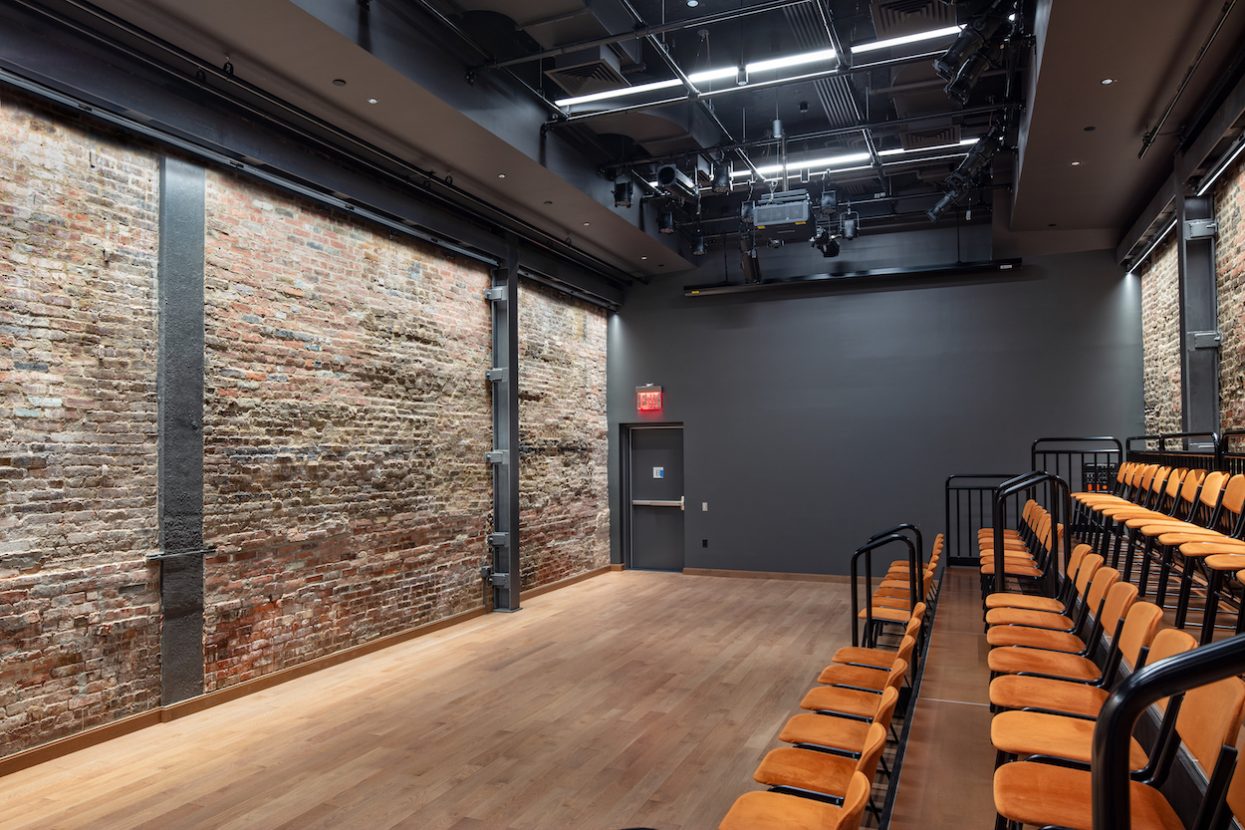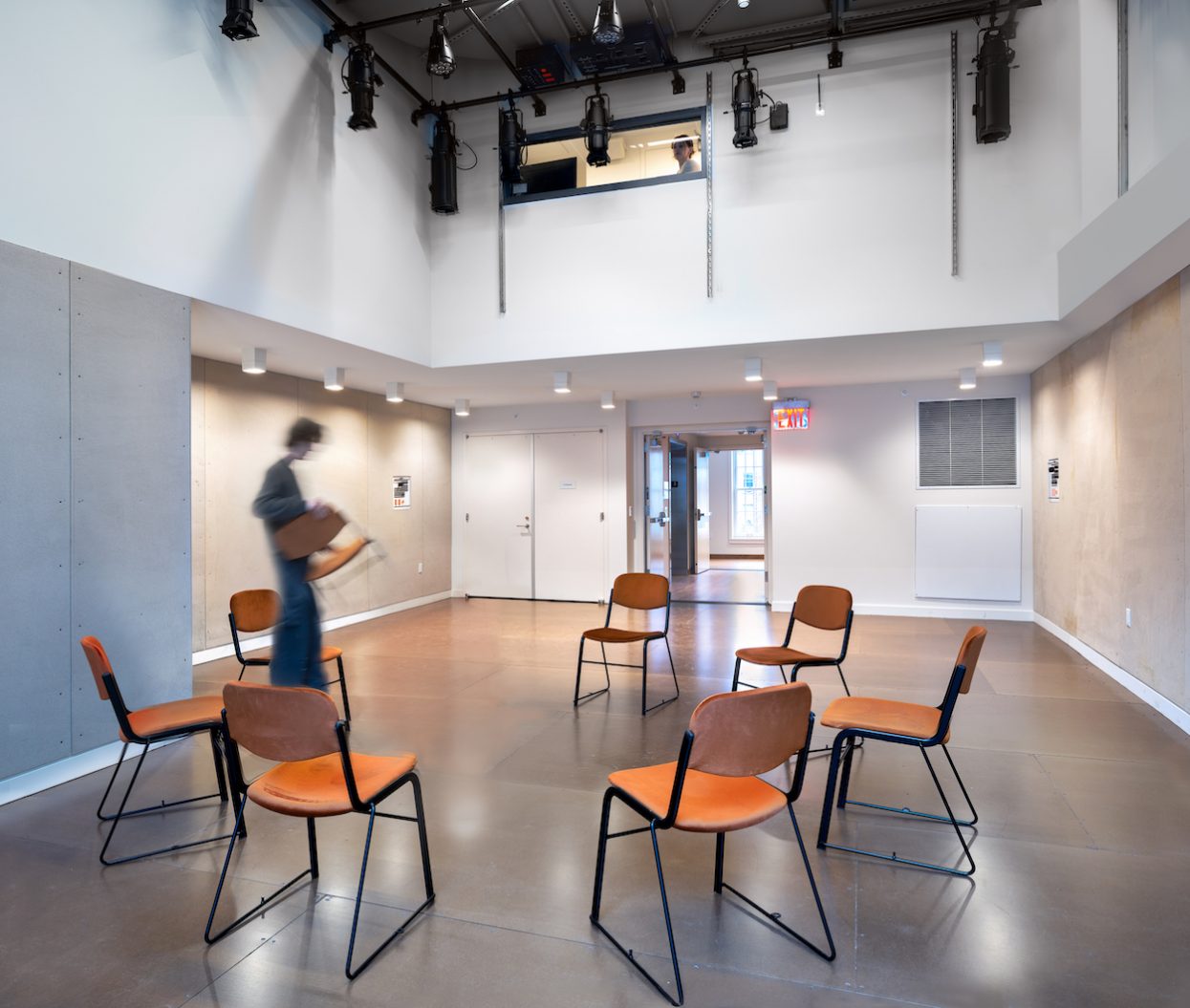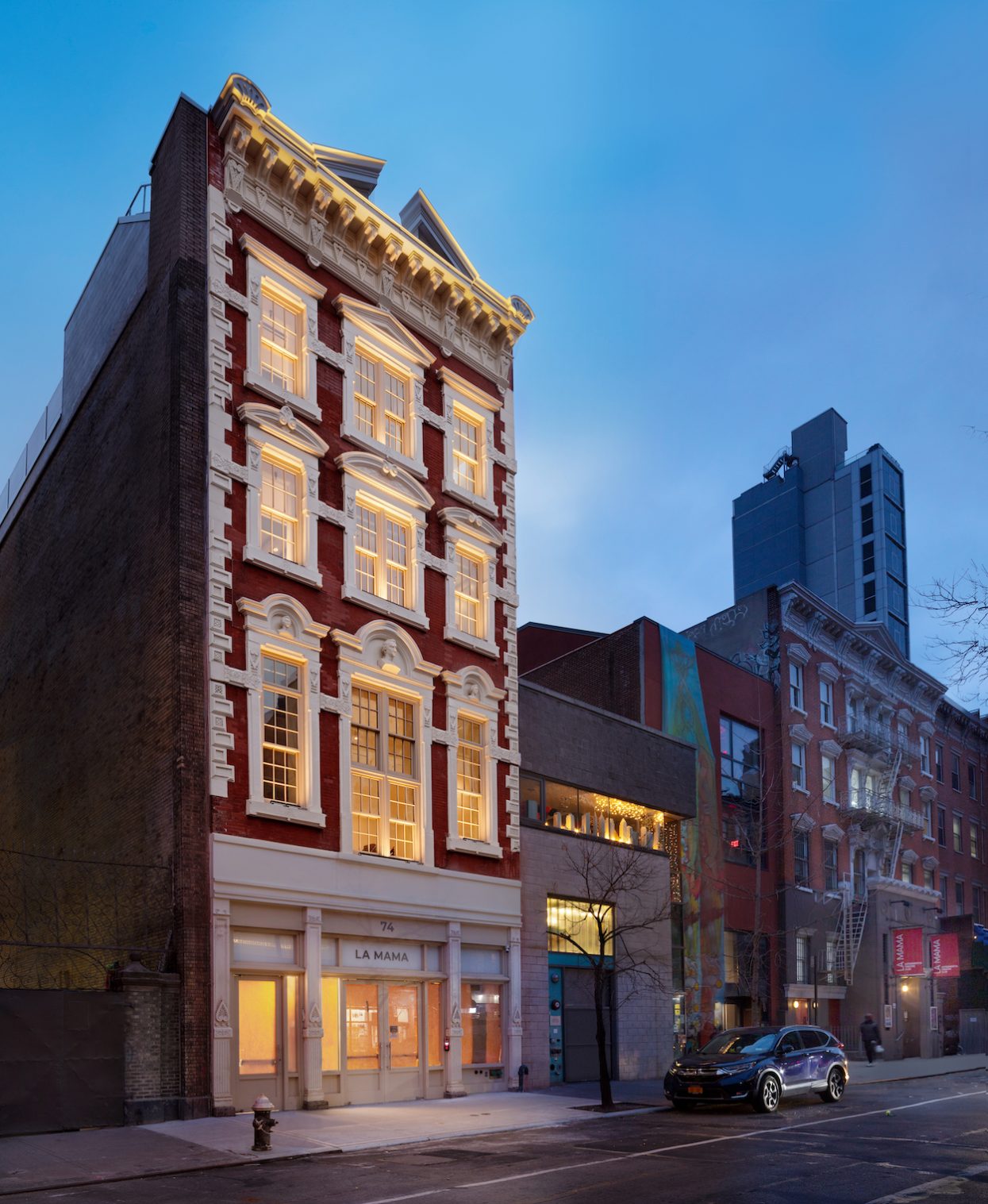In 1961, Ellen Stewart was an accomplished dress designer—the first African American designer at Saks Fifth Avenue—when her playwright half-brother needed a place to stage his work. She had a vision: transforming an East Village basement apartment into a theater devoted to the experimental and new. That vision became La MaMa, a central hub for the avant-garde that launched work by the likes of Philip Glass, Meredith Monk, Taylor Mac, Julie Taymor, and thousands more—and also changed the geography of performance itself, conceiving of and nurturing the Off-Off-Broadway scene.
Eight years later, La MaMa found its first permanent home in a building already more than a century old. It made the rough-and-ready cast-iron structure a place for early iterations of Harvey Fierstein’s iconic Torch Song Trilogy and for staging grounds for actors and performers including Al Pacino, Robert De Niro, and Bette Milder. But after some 3,000 performances and the turn of the millennium, the building was in desperate need of repair. In 2015, the theater brought in Beyer Blinder Belle, who demonstrated its historic preservation chops in spaces like the Apollo and the city of Antwerp. The firm in term cast such accomplished co-stars as theater consultant Jean-Guy Lecat and acoustic consultant Charcoalblue.
Roles assigned, the production began. And despite the pandemic and its associated supply-chain woes and delays, this spring sees the return of the La MaMa Experimental Theatre Club to its original home, just a few feet down Manhattan’s East 4th Street from its newer sister venue, the Ellen Stewart Theatre & The Downstairs. “There’s a lot of musical and performance history in the [original] building,” says Beyer Blinder Belle partner Richard Metsky. “We wanted to carry that history forward, to create a space that enables La MaMa to remain at the forefront of experimental theatre for the next 50 years.”
To that end, Beyer Blinder Belle retained the building’s original exterior decorative detailing, including charming upside-down hearts spilling down the facade to the sidewalk. A new storefront of glass and aluminum connects the broadened lobby, with its restored cast-iron pilasters, to the bustling street. Crucially, it also makes the lobby ADA-accessible, a priority furthered by the new elevator connecting to the second-floor performance space. With its brick walls beautifully aged by decades of artful encounters, it rests on a new sound-separated floor to reduce audio bleed while a broadcast-enabled data network streams performances globally.
On the third floor, a double-height multipurpose space offers room for children’s workshops to foster future generations of experimental artists—and private parties to help fund them. But everywhere, from the expanded ground-floor dressing rooms to the ample outdoor terrace, welcomes artists and audiences whose various abilities are their strengths. That, after all, was part of Stewart’s original vision, too.


